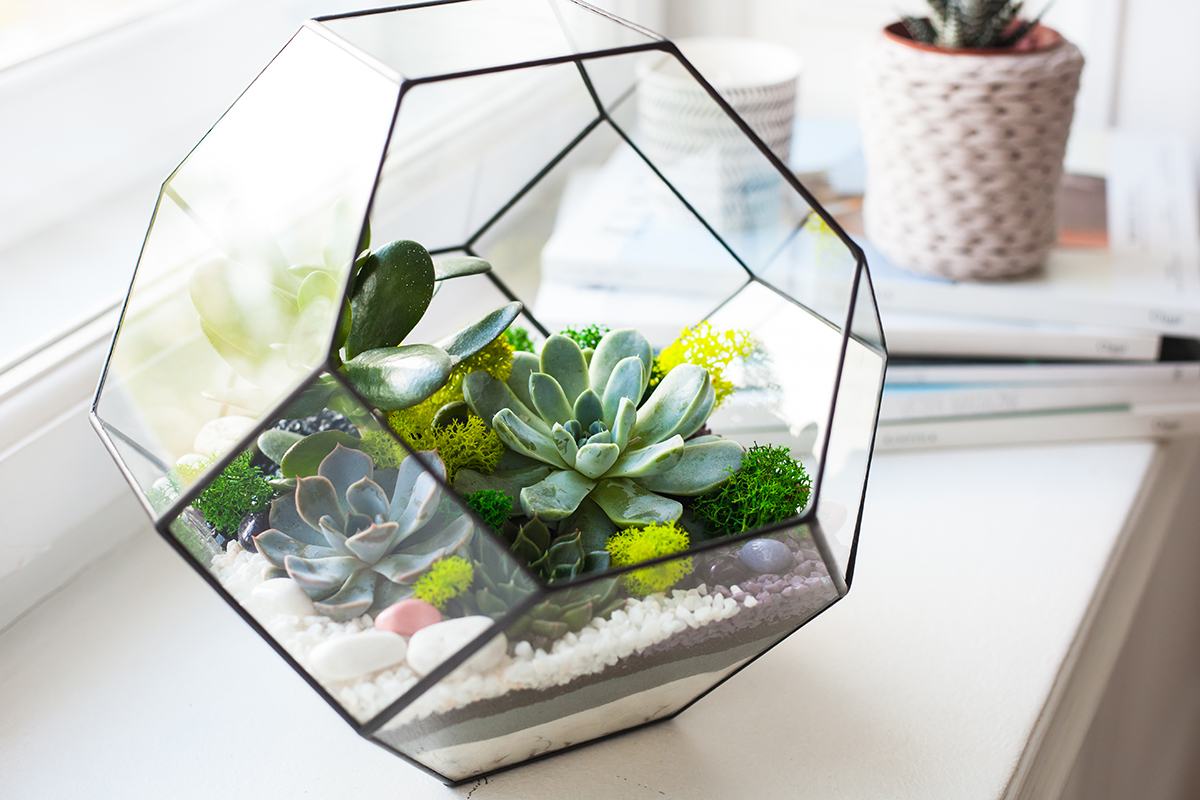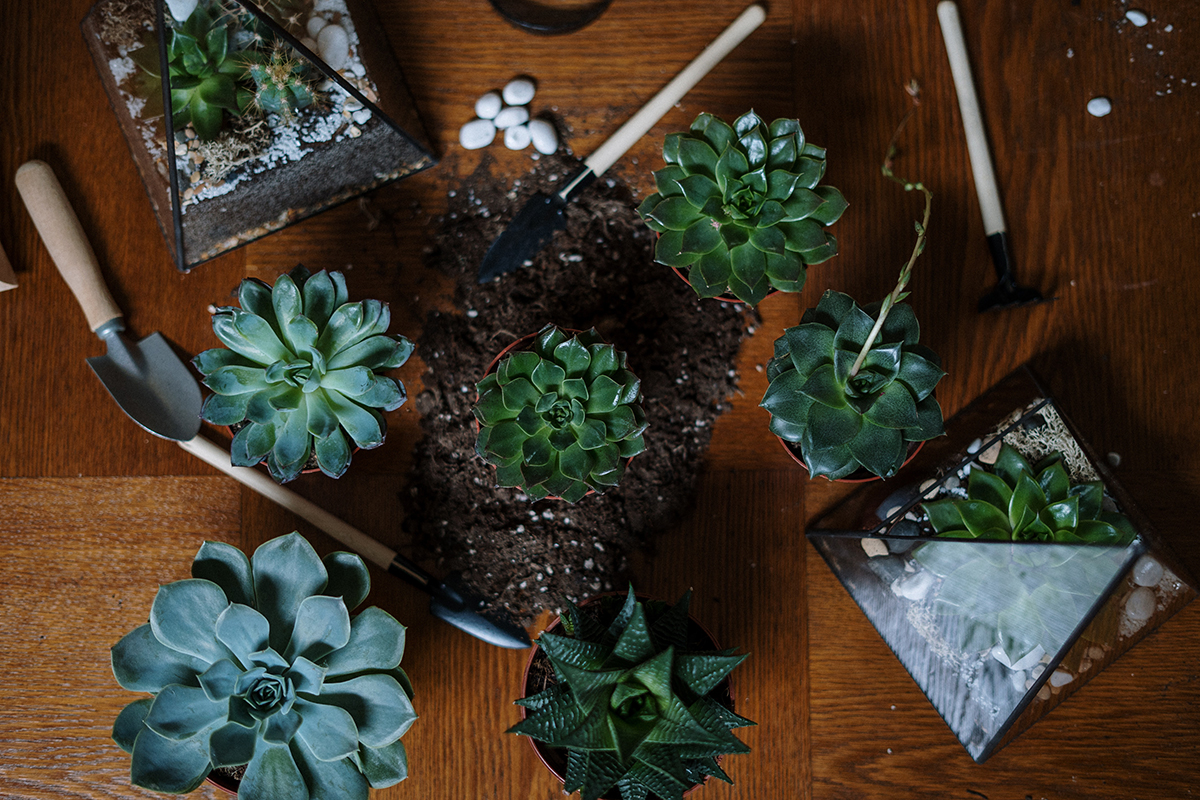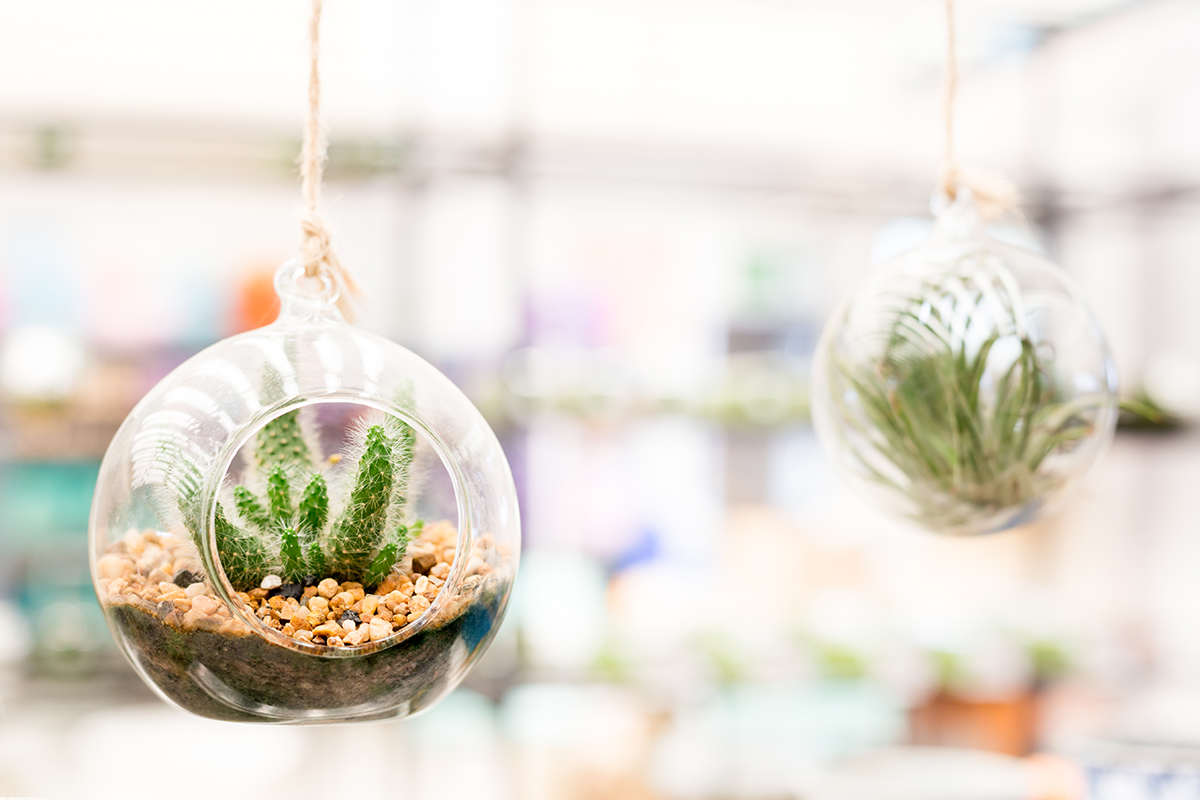For anyone who loves nature and prefers to have greenery around rather than a concrete jungle, having plants around can be a nice way to reduce anxiety and stress. They help you feel more content, relaxed and energized while enriching your surroundings and nourishing your psyche. Not only are they signify the true meaning of life, but they also help you understand your thoughts and feelings more clearly. And what could be a better way to enjoy nature than in a terrarium!
A terrarium is essentially an ecosystem within an enclosed, transparent structure bringing you closer to nature. From small shrubs, moss, flowers to small plants, terrarium empowers you to plant, nurture, and experience the beauty of life, patience, and care!
But because terrariums usually have limited space, taking into account plant species, water, and light requirement, it gets difficult to know which ones are perfect for your terrarium. So in search of the best low care plants for a terrarium, we rounded up ten plants that can fit in your new terrarium with minimum care and maximum beauty.
1. Artillery Fern
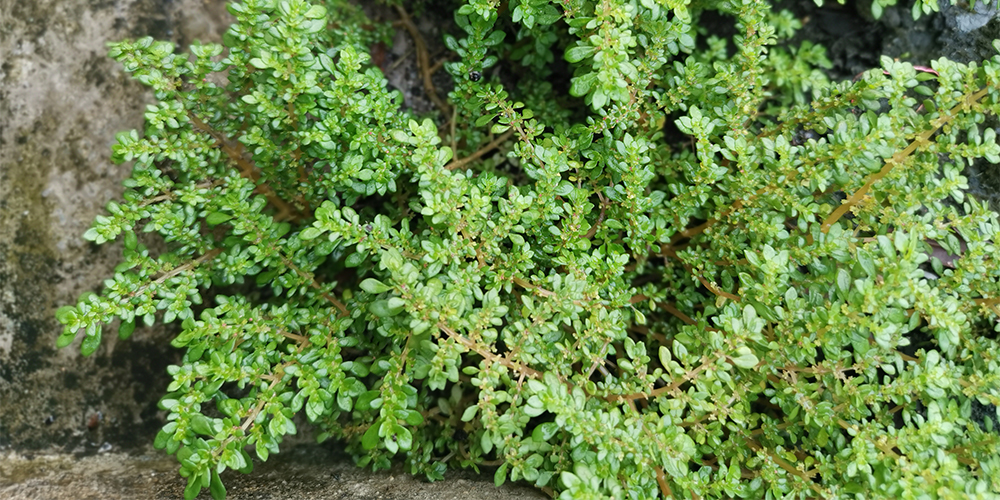
Artillery fern is a unique plant that grows perfectly and requires very little care—some would say too little care. It does, however, need common sense to take care of it because it does react to changes suddenly. It is an attractive and unusual plant, and its spore-like cones look really cool when it grows in a half-circle. They are actually clusters of small scales that form at the top of new shoots and at the base of leaves. It grows beautifully in a humid terrarium but will be ruined if over-watered.
The Artillery Fern is a slow grower yet a non-invasive plant. Small clusters of plants can start to grow quickly and fill in gaps in your terrarium. This plant is also the perfect size for your terrarium—a little bigger than the average terrarium plants. Just like the other terrarium plants, when you plant the artillery fern, it will probably fall over and again needs common sense to plant it. But in time, it grows to be a full and sturdy terrarium plant.
2. Baby Tears
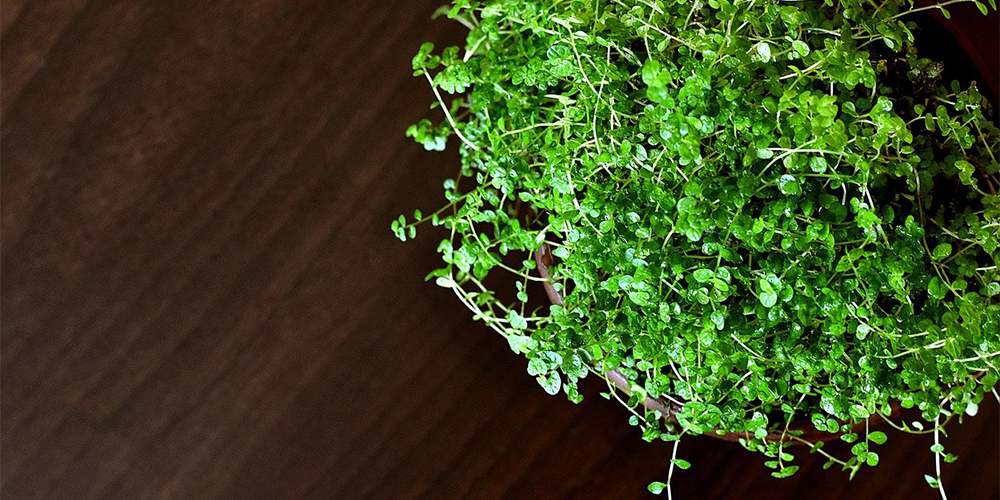
This super-easy to maintain evergreen, also called miniature tears or baby tears, is native to the tropical rainforest of South America and is cultivated in many countries. Though it is a small plant, the baby tears can spread out at a fast rate after being sown. It is a great candidate for the low-care terrarium because it can handle a little bit of shade and can adapt to a wide variety of conditions. So if you are looking to experiment with different types of plants in one terrarium, baby tears with their fancy texture can blend into any terrarium design easily. It requires frequent watering in the spring but does not like to be over-watered. Its short growth can also fill in the gaps between taller plants and does not require much cutting. You can use various techniques to propagate the baby tear. In other words, it is a great starter plant and can provide color, texture, and interest to your terrarium.
3. Aluminum Plant
Aluminum plant, as its name suggests, is a plant with shiny leaves not only because it is fast-growing but also because of light reflecting on the tiny hairs that are not visible to the naked eye. Although they are very low maintenance, you will still need to water them as scheduled. These plants grow well in wet and humid environments. So, you will definitely need to add a water feature to your terrarium if you want to keep these plants. Since the aluminum plant is relatively small in size, it is suitable for smaller terrariums. Also, being attractive and hardy, it is a good option for first-time terrarium owners.
4. Creeping Fig
Creeping fig, despite its name, is not a fig at all. While it does resemble a fig tree in many ways, you have to keep in mind that it grew from the ground upwards instead of from the tree top-down. If you are a newbie to terrariums, creeping figs are a great choice. Since they are not very picky about soil and light conditions, you can plant this outside with relative ease too.
Creeping figs can grow best in indirect light and soil that drains well. Besides being easy to grow, creeping figs also do not produce messy droppings like flytraps or Venus flytraps. And do not be amazed if your newly planted creeping fig suddenly starts growing flowers like a flower you just bought at the florists. This is because of the fig tree flowers as well. So, they might look a little strange, but they are delicate and pretty. You can simply leave them on the plant to wither or cut them off if you do not like the look of them. Either way, they will not harm the plant. Creeping figs act as a medium-height plant in your terrarium, and so they fit perfectly in a larger-sized terrarium.
5. Prayer Plant
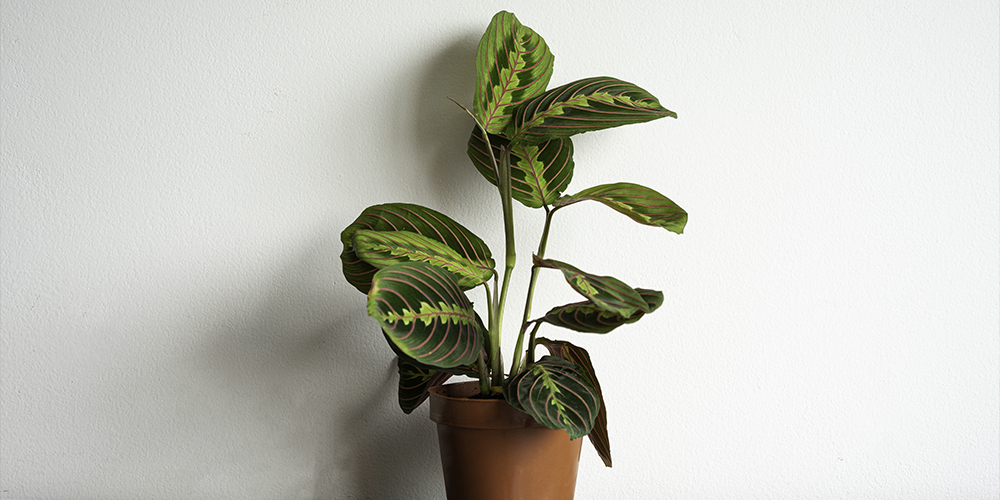
If you want to add texture to your terrarium, consider using Maranta leuconeura or the prayer plant. Commonly called a prayer plant, this plant also gets its names from the way it hangs downward, and it has wedge-shaped, medium-sized leaves. This beautiful plant does not require much sunlight or water to grow and can handle meager watering and moderate sunlight without a problem. Plus, they have a very pretty silver-based color, and under different lighting conditions, you might even be able to notice hints of other colors in their leaves.
6. Pothos
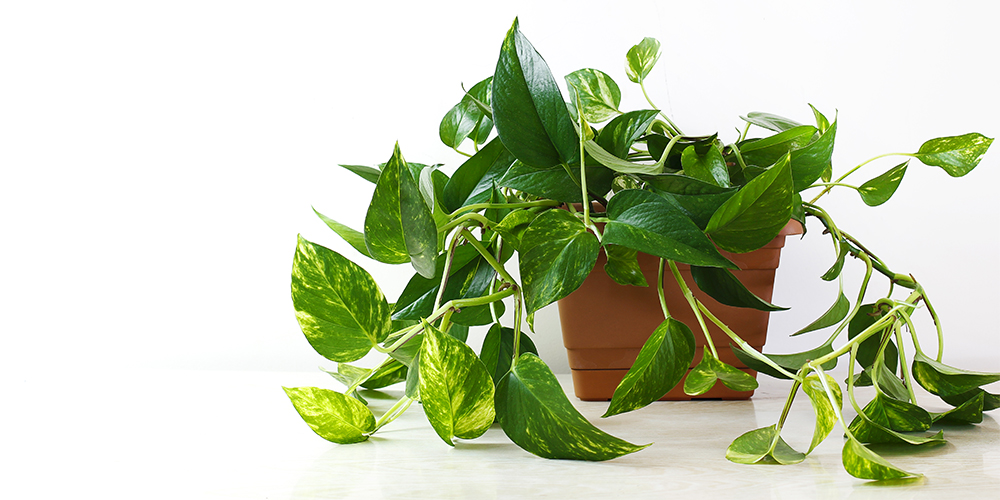
A popular houseplant, pothos is all about longevity and durability, and for many people, it was their first step in indoor gardening. If pothos can grow and thrive indoors, you can be sure it will be able to tolerate the great outdoors. Pothos will do really well if you just throw it into the terrarium and watch it grow. If it can bark at a wall without much light, it is even able to grow in the terrarium.
These plants are used as ground covers, hanging vines, and scrambling vines but add instant elegance and dimension to any terrarium. They are easy to care for, and their leaves are big enough for a young child to spot the markings that resemble puppy (or koala or other animals) faces. These leaves are very sturdy, and so they easily adapt to being pruned. Pothos is practically immortal. You probably will not want to replace this plant for a long time, and you can definitely add some to your terrarium to make a unique statement.
7. Croton
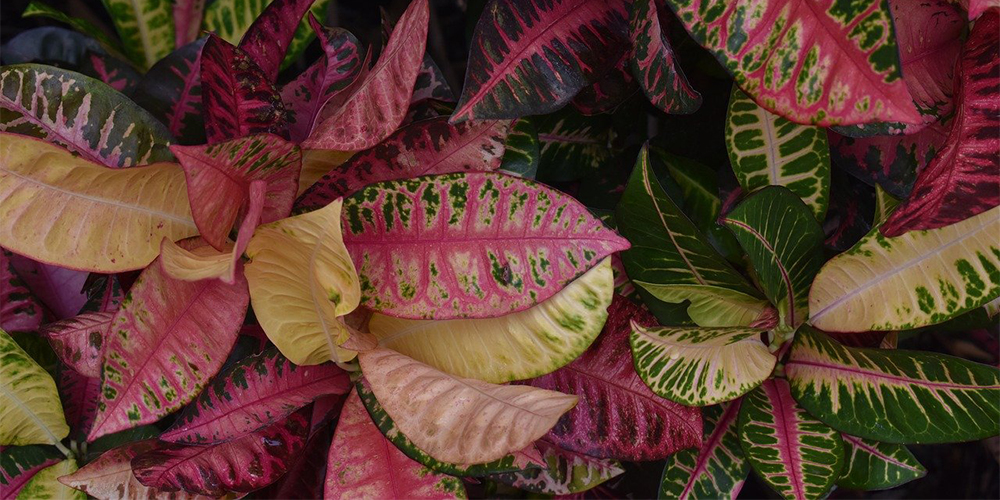
These plants are versatile and popular additions to a tropical rainforest terrarium. They are sometimes called the “ice plant” because of their white-and-green pattern, but they also have multiple forms in the wild. While they are just as easy to grow as other low-maintenance plants on this list, they are even easier to grow than most of your house plants, needing little to no light at all. You can prune your crotons and even add new plants from cuttings to use as fillers in your terrarium, and they’ll be happy as long as they get some water every once in a while.
8. Button Fern
For fern lovers, the elegant or button ferns are a popular choice for terrariums. They are a species of maidenhair ferns, and they are native to Northern California and Oregon. These plants require light and can handle moderate humidity, at least for the first year. However, after that, if you are growing them in a tropical rainforest terrarium, you will want to moisten the soil weekly. They also grow very well in terrariums that are in direct sunlight, but if they are overexposed, they will burn.
Button ferns are medium height ferns and can fill in spaces in your terrarium. You can easily grow the maidenhair fern on the ground in a terrarium if you want it to grow outward, or you can hang it from the top of the glass. This will add a beautiful dimension to your terrarium. While it grows slowly, they are also highly fragrant and elegant.
9. Polka Dot Plant
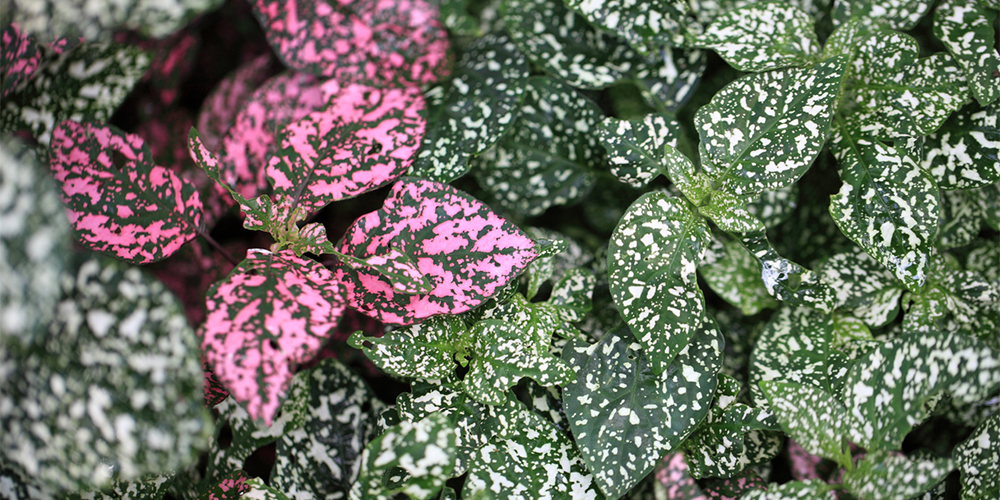
If you are looking for a trailing plant to fill in space and add flowing color to your terrarium, consider the Polka Dot Plant. These plants are also sometimes called “African Violets.” They are a species of petunias but look and act like miniature trailing African violets. They get their names from the spots that look like polka dots on their leaves. They are easy to grow and propagate themselves—and some even say that this plant is capable of living on its own without soil.
The main requirement of the plant is warmth and light of about 70F. You can harvest it by cutting the root and plant it again about a half-inch into the soil. The Polka Dot Plant is also tolerant of dry soil, which makes it ideal for a terrarium. The blooms last for a week, and the plants flower all year round, producing petal-less flowers with two pointed daisy-like structures. They even attract ladybugs and other beneficial aphids that you can catch and keep in your terrarium for eating pest bugs.
Conclusion:
You can get many terrarium plants to adorn your mood garden. Most of them are pretty easy to maintain. So, the next time you consider a specific design for your terrarium, think about simply what you want first. Then choose the plants that will best fit the in-room or style.



